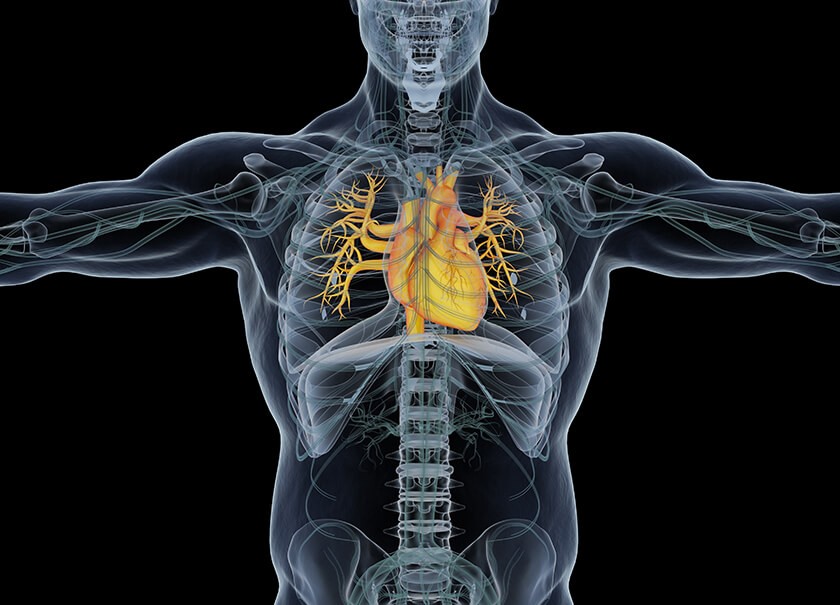
Going in for an Imaging Test? Here’s How to Get the Most Accurate Results Possible

Imaging tests can provide your doctor with valuable information about your condition. Your physician may order an imaging test to diagnose an illness or determine the severity of an injury, for example. Imaging tests can also help your doctor determine if a treatment is working. Getting accurate results from an imaging test is important, of course, as a good image gives your clinician a clear view of your internal organs.
Accurate results rely on a number of variables, many of which are out of your hands. Sometimes anomalies are too small to see, for example, and the location or position of an organ may make imaging difficult. The accuracy of results are often the result of highly sophisticated imaging equipment and the skills of the radiology team running the tests, but there are steps you can take to ensure the most accurate results possible with your next x-ray, ultrasound, magnetic resonance imaging (MRI), or positron emission tomography (PET) scan.
Getting the Most Accurate Imaging Results Possible in 8 Easy Steps
1. Follow instructions as closely as possible
Some imaging tests require that you drink certain preparations to empty your bowels or as a temporary dye. Other tests require that you hold your breath, stay very still, or assume an uncomfortable position. Radiologists and other medical diagnostic imaging professionals understand that pain, illness, mobility problems and even anxiety can prevent you from following instructions to the letter; tell the doctor, radiologist if you are having trouble following the instructions.
2. Ask questions
Feel free to ask questions as needed at every step along the way. The more you know about an imaging procedure, the better you can participate in getting a clear image.
3. Remove your jewelry, external hearing aids, and anything metal from the outside of your body
Metal can interfere with imaging tests. Metal can show up on x-rays and ultrasound images, for example.
Wearing metal on the body during an imaging test can also be dangerous. MRI uses a powerful magnetic field to create images. This magnetic field can attract objects made of metals, and move these objects suddenly and with great force. The magnetic field in MRIs can even attract metal in some types of clothing, makeup, nail polish, deodorant, powders, perfumes, lotions, hairspray, and other cosmetics.
4. Tell the radiologist if you have metal inside your body
Speak up if you have metal implants, clips, bullets, a heart pacemaker, electrical stimulator, or neurostimulators inside your body. Implants made from titanium are MRI compatible. The magnetic field of an MRI can cause non-titanium metal objects to shift position within your body; MRI magnetic waves can also cause pacemakers to malfunction.
5. Share your medical history with your radiologist
Tell your radiologist if you have a personal history of kidney failure, kidney disease, kidney transplant, liver disease, or other serious health conditions. Certain dyes and contrast agents can affect kidney and liver function in patients who have these conditions.
6. Hold as still as possible when directed to do so
Medical imaging is a lot like taking a picture with your camera or phone, in which a moving target creates a blurred image.
7. Try to relax
Being sick, injured or in pain is stressful, and undergoing diagnostic testing can add to that stress. Many patients stress about being in a confined space, feel uncertainty about what to expect with the procedure, worry about the results of the test, and have other concerns. This is especially true with MRIs that often require patients to sit still in a confined space – which can be quite noisy – for long periods. Holding your body in a certain way during the imaging test can be uncomfortable, which is also stressful.
While testing can be stressful, it is important to relax. Moving during the test can cause blurred images, and cutting a test short due to anxiety may provide inadequate test results.
Sedation may be appropriate for some tests, but relaxation techniques typically work well for most imaging tests that do not require anesthesia. Relaxation techniques include deep breathing exercises, progressive relaxation, biofeedback and self-hypnosis.
8. Tell your radiologist if you are uncomfortable
Imaging tests are for your benefit and important to your health, so tell the radiologist if you feel uncomfortable, anxious or uncertain about undergoing the test. Radiologists understand that each patient has special needs—physically, medically and emotionally.
For more information about getting the best results possible from your imaging tests, consult with your doctor or radiologist at RAI. Every member of your health care team is committed to providing you with the most accurate imaging




